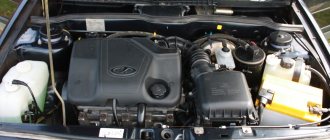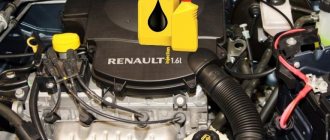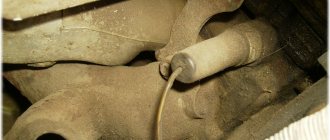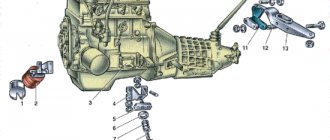It would seem that the answer to the question of how much oil to pour into the engine is the simplest - pour according to the instructions and be done with it. However, everything is not as simple as it seems at first glance. There are a number of dependencies and technicalities that you should be aware of. The question of how much oil to pour into the engine is especially relevant today, when it is time to switch to the summer brand.
The most dangerous thing in this matter is underfilling. Its deficiency leads to oil starvation of the power unit, which entails a high probability of jammed pistons, rotated liners and other serious problems that directly affect the performance of the power unit. Therefore, in addition to getting an answer to the question of how many liters of oil to pour into the engine, you need to constantly monitor the level and it is advisable to carry a spare liter with you just in case. Some drivers rely entirely on the oil pressure sensor indicator, but you should know that when it lights up, in many cases this already indicates a malfunction.
Indeed, you can find out recommendations on the required volume of lubricant for the power unit of a particular car brand in the attached operating instructions. It should be taken into account that the manufacturer indicates the full volume. This means that the technical literature indicates the amount of lubricant required for a freshly assembled motor. As for replacement, its volume should be slightly smaller. The fact is that when replacing, it is impossible to completely drain all the “working off”, because part of it remains in the crankcase, hard-to-reach cavities and on the parts of the power unit. As a rule, about half a liter remains. The conclusion is simple - you do not need to completely fill the entire volume indicated in the manual, but monitor the level using a dipstick or using indicators on the dashboard, which are found in some brands of cars.
How much oil should be poured into the engine if you have an instruction manual is now clear. But if there is no “smart” book, what should you do? In this case, specialized sites can come to the rescue, which you will have to search for, or some expert advice outlined below.
How much oil should be poured into the engine
It is impossible to give a definite answer to this question. Vehicles of different manufacturers and brands have their own lubrication system design. In addition to the crankcase, the oil fluid is located in the pipeline, filter, crankshaft, and other components. How many liters of oil you need to pour into your own engine can be found in the operating manual. This is true when you need to fill the lubricant for the first time. The manufacturer indicates the proper filling rate if the power unit is hollow, just assembled.
After draining the oil solution from the system, some of it remains not drained. This is 300-500 grams of lubricant. It is possible to determine how many liters of oil to pour into a car engine by following the recommendations developed for this. Engines of domestic cars with a volume of 1.8 to 2.4 liters can contain from 3.5 to 4.0 liters of oil fluid. The same imported power units will contain from 4.0 to 4.3 liters of lubricant. To determine how much oil is in the engine, you need to use a dipstick and perform several steps:
- You must initially pour 3.5-3.8 liters of lubricant into the filler neck.
- Wait 2-3 minutes and check the level of the lubricant solution with a dipstick.
- If the value is insufficient, then you need to add 100-200 grams and check the degree of filling again.
The procedure must be repeated until the desired filling level is achieved. When pouring lubricant, you must remember that it is better to add little by little than to immediately overflow. Pumping back the lubricant from the system is a very problematic task. If too much lubricant enters, it will flood the engine parts and components near it. This will lead to foaming of the oil and heavy operation of the power unit. If the filling indicator is less than normal, the rubbing components and parts will quickly wear out.
What is machine oil for and how much to fill?
To accurately calculate how much oil to pour into the engine, it is necessary to take into account the make of the car, engine size, as well as the operating characteristics of the car.
Main functions of machine oil
The presence of lubrication in the lubrication system is a vital necessity for a car; engine oil helps protect the parts of the power unit from:
- dry friction;
- corrosion;
- overheating;
- chemical reactions that occur during fuel combustion.
In addition, the oil removes mechanical friction products (metal shavings), as well as soot and carbon deposits that form in the cylinders from the engine.
Long-term driving with an acceptable but very low amount of oil also reduces engine life.
Required volume of lubricant in a passenger car
The easiest way to read the exact data on how many liters of oil to pour into the engine is in the documentation for the car. If the manual is lost, you can get information from a service center or on car enthusiast websites.
Approximate amount of lubricant for a 1.8–2.4 liter engine:
- VAZ and other Russian cars - from 3.3 to 4 liters;
- foreign-made cars - from 4 to 4.3 liters.
For Lada Grant and West with a 1.6 liter engine with a manual transmission, 3.2 liters of oil are required, with an automatic transmission - 4.4 liters, and the amount of oil in the KamAZ lubrication system is about 30 liters.
The engine oil filling volume, which is written in the manufacturer's manual, refers to a completely empty tank of a new car. In fact, even if you completely empty the fuel system, about 400 ml will still remain inside. Therefore, it is recommended to fill in 0.5 liters of lubricant less than stated, and gradually add the rest , checking the level with a dipstick.
Table of the ratio of the volume of the power unit and the required amount of lubricant:
Self-monitoring of oil level
Even if the car is equipped with electronic systems that monitor the lubricant level, you should not completely trust the car’s readings. You should periodically check the lubricant level yourself, especially after a long trip or before it.
When using the machine actively (especially in urban conditions), it is recommended to check the oil level every 3-4 days.
You can find out the current volume of oil in the engine using a special dipstick located under the hood.
Checking the lubricant in Volkswagen Polo.
To measure the level correctly, you should:
- Place the vehicle on a strictly horizontal surface (the tilt of the body will affect the accuracy of measurements).
- You can only check the oil level when the engine is cool - while the temperature inside the internal combustion engine is high, the pressure in the lubrication system remains high, and not all the liquid flows into the oil pan. Therefore, if the engine has just stopped, you need to wait about 20 minutes before starting the measurement.
- Remove the dipstick and wipe it with a clean cloth.
- Measure the oil level using a dipstick.
- Wipe the instrument again and repeat the measurement again.
- If the lubricant level is below or slightly above the Min mark, add what is missing.
If during replacement a few drops fall on the body of the power unit, they should be thoroughly wiped off with a cloth or napkin.
Optimal lubrication level in the internal combustion engine.
You should only check how much oil is in the engine with a clean dipstick. If you wipe it with a loose or dirty cloth, lint or small debris may remain on the surface and get into the engine.
What is the danger of underfilling lubricant?
Insufficient oil volume in the engine leads to overheating, as well as dry friction and wear of engine parts and, as a result, rapid failure of the power unit.
Signs of low engine oil:
- noisy engine operation;
- extraneous sounds from under the hood;
- increasing the operating temperature of the power unit;
- turning on the cooling system more often than usual.
For cars with high mileage, the amount of lubricant should be checked as often as possible (for example, after each refueling) - when the light on the dashboard lights up for insufficient oil pressure, it may already be too late to top it up.
What if you pour it in excess?
Excessive amount of oil in the engine is no less dangerous than its deficiency, and can also damage the engine. Excess lubricant will provoke:
- filling spark plugs;
- foaming of the oil due to rotation of the crankshaft, as a result of which the engine will begin to stall;
- carbon deposits will appear inside the engine;
- fuel consumption will increase by 2–3%;
- the content of harmful substances in the exhaust will increase;
- Excessive volume will squeeze out the seals and break the tightness of the system.
Filling spark plugs.
It is forbidden to check the lubricant level or add it while the engine is running - this may result in boiling oil coming into contact with your face or body.
Determine oil level - methods
To find out the amount of oil in a car engine, several requirements must be met. They are mandatory:
- the car must be placed on a level surface;
- the power unit must be cool. If the check is carried out after stopping the vehicle, then you must wait 15-20 minutes. During this time, the temperature of the starting unit will decrease, the pressure in the lubrication system will drop, and the oil solution will drain into the crankcase;
- The lubricant level must be measured using a standard dipstick.
There are marks on the surface of the probe: min and max. They indicate the minimum and maximum permissible filling volume of oil in a car engine. The process of determining the lubricant level consists of the following points:
- The dipstick must be removed from its regular place and the remaining lubricant must be wiped off with a clean rag.
- Install the measuring rod in its original place.
- Remove the gauge again and inspect the oil layer. It should be located between the min and max marks.
- If the lubricant layer is below the minimum mark, then an oil solution must be added to the lubrication system.
- If the lubricant level is above the maximum mark, excess lubricant must be drained from the system.
Nowadays, almost all cars are equipped with computer warning systems for the presence of oil solution and its consumption. It is not recommended to completely trust computer data. Sometimes, especially before and after a long trip, you need to check the lubricant level in the power plant yourself.
How much oil does it take to change?
Changing the oil in the Renault Logan 1.4 and 1.6 engine
Before you fill your car with oil, you need to know how much oil is needed. You can find this information:
- in the instruction manual;
- from a service specialist for a specific car brand;
- through a request to the official representative of the brand, etc.
In addition, information about tolerances and requirements for mixtures will not be superfluous. Plus, it’s worth considering some nuances when replacing fluid:
- the machine must be on a level surface;
- Before draining the fluid, the engine must be warmed up;
- It will not be possible to completely remove the mixture by draining after opening the plug in the pan or by draining the oil through the filler neck;
- Before replacing the oil filter, you should wet the filter element by pouring a little oil into it.
One more point: the volume indicated in the manual is complete. That is, this amount is poured into the assembled engine. But, if the engine has already been used, the amount of lubricant will be less. Taking into account the above nuances, about 0.5 liters of mixture may remain in the engine. Accordingly, it is impossible to add the full volume specified in the instructions.
After replacing the fluid, you should monitor its level using a dipstick. Or using electronic sensors that are equipped with some brands of cars. The probes have minimum and maximum marks. And the optimal mixture level is considered to be between these indicators. If the engine is worn out or has increased consumption, then some owners deliberately exceed the level by 1...1.5 cm, but do not bring it to the maximum level.
Intervals when you need to replace
The service book for the vehicle specifies the mileage after which the lubricant solution must be replaced. In the absence of intense operating conditions, driving on the highway outside the city, the mileage between lubricant changes can be up to 15,000 km. Operating vehicles in city traffic will reduce mileage to 9000-11000 km. But these data are not completely accurate, since the condition of the lubricant is influenced by several factors, which include:
- Type and quality condition of the fuel being filled.
- Power plant volume.
- The type of lubricant that was previously filled and its condition.
- The number of hours worked by the engine.
- Technical condition of the vehicle.
- Vehicle operating conditions and power plant operating modes.
These factors can change the quality of the lubricant. Loss of its characteristics by the lubricant will lead to rapid wear of the power plant. In such a situation, an analysis of the oil solution carried out in laboratory conditions can give an accurate answer about the quality of the lubricant and the need to replace it.
Why does the engine “eat” oil?
How many liters of oil a car consumes primarily depends on the engine size: powerful cars with 6- or 8-liter engines can “lose” up to 1 liter per 1000 km, but for ordinary city sedans or small cars this is not normal. If the technical condition of the fuel system is in order and there are no leaks, the cause of increased consumption may be:
- Long downtime - while the machine is not in use, condensation inside the motor reacts with technical fluids and damages its surface.
- Prolonged operation of the engine at idle speed.
- Frequent starting (for example, in traffic jams).
- Transporting heavy loads - increased load on the power unit leads to thickening and oxidation of the lubricant.
- Driving on bad gasoline, which does not burn completely and mixes with oil.
Express replacement of lubricant using a vacuum leaves a lot of waste in the system. Repeating this procedure frequently will damage the engine.
The need for replacement according to engine hours
The initial data is the stable average speed of the vehicle in the city and the manufacturer's recommendations for changing the lubricant. Let's say the speed in the city is 40 km/h, and the factory recommendations for replacement are 15,000 km.
To calculate engine hours, you need to divide the distance by the speed limit. In this situation, 15000/40=375 m/h. The obtained value means that after 375 operating hours of the power plant it is necessary to change the oil.
The API international standard has developed a summary table for replacing oils, depending on their type and service life.
| Type of oil solution | Operating hours |
| Mineral | 130-150 |
| SyntheticARI SJ/SHAPI SL/SMPolyalphaolefinsEsters | 230-250320-350370-400430-450 |
| Semi-synthetic | 230-250 |
Need for replacement due to fuel consumption
The initial data should be fuel consumption per 100 km of movement according to passport data and actual. For example, according to the passport, consumption is 9 liters per 100 km, but the actual consumption is 11 liters. According to the passport, the oil change should be carried out every 15,000 km of vehicle movement.
Fuel consumption is calculated using the proportional method for passport and actual data separately. For passport data: 15000x9/100=1350 liters. For actual data: 15000x11/100=1650 liters.
The actual distance through which new oil must be filled is calculated by a similar proportion: 1350x15000/1650= 12270 km.
Each method can be used for any vehicle. It is only necessary to record the data at the moment of pouring lubricant into the motor.
Let's sum it up
In order to determine how much oil to pour into a car engine, you must follow several recommendations:
- Choose a car oil for the vehicle that will be constant throughout its operation. The lubricant must be selected taking into account the operating conditions of the vehicle.
- If the vehicle is actively used, check the oil fill level using a dipstick at least once every 3-4 days.
- Monitor the interval between runs when replacing the lubricant.
- Fill the engine with lubricant in accordance with technology. Do not underfill or overfill the solution.
- If you lack experience, knowledge or doubt, contact a service station that has the necessary equipment. Specialists will carry out the necessary work on the engine, regardless of whether it is diesel or gasoline.
Compliance with the recommendations guarantees long-term operation of the power unit.
How to change the oil yourself?
The oil has its own permanent place under the hood, shaped like a canister and connected to the engine with hoses. When a spark is supplied to the combustible mixture, oil is pumped from the container into the engine crankcase, where it fills all the space, washes the moving pistons, cools the internal combustion engine, and flows heated into the sump, from where it returns again to the container, where it mixes with cold oil and cools. A kind of circulation of oily liquid occurs. It is because of this circulation that the volume of oil to be replaced in the engine exceeds the capacity of the car engine itself.
If the oil movement system is well-functioning, the seals and filters do not leak, then the oil volume remains unchanged for a long time. But sometimes leaks appear due to worn out seals, poorly connected hoses, or a loose drain hole, and the fluid level drops. Accordingly, the pressure drops, and you have to constantly top it up.
The crankcase has 2 holes - a drain, which is located in the bottom, and a filler, through which it is filled.
It is not recommended to perform any manipulations with the oil immediately after turning off the engine, because it will be very hot and you can get burned by it. Before draining the oil product from the crankcase, or performing repair and maintenance work, the engine must also cool down.
But still, to reduce viscosity and improve fluidity, it is desirable that the oil be tolerably warm. When the engine is cold after being idle, it is worth starting it for a short time.
It is better to change used oil on a lift or in a pit. Please note that on most new cars, especially foreign cars, the engine is protected from above by a casing. It must be removed before starting work. At the bottom, the metal casing protecting the oil pan is removed.
The oil filler cap is unscrewed from above. This is necessary so that a vacuum does not form in the crankcase, and the air penetrating into the container pushes out the drained liquid. Place a convenient container (for example, a small bucket) under the crankcase drain hole, and unscrew the drain hole cover. And while the waste oil product is drained, you can unscrew the oil filter. Keep in mind that a small amount of waste oily liquid will also leak out from under the filter; place some kind of container under it as well.
The oil will drain for 10-12 minutes. Take your time. Allow the waste fluid to drain completely. Then pour in about 0.5-1 liters of fresh oil, and let it flow through the system, washing away the remnants of the old one. When all the liquid has flowed out, screw on the drain cap, set the bucket aside, install the oil filter and pour new oil through the funnel, previously purchased at an auto parts store.
Important. If you change the oil filter, be sure to pour a little oil into it so that the engine does not experience oil starvation in the first seconds of operation. When installing the new filter in place, do not overtighten so as not to damage the rubber seal.
After you fill in the oil, replace the casings and check the level with a dipstick, start the engine for 5 minutes, let the lubricating fluid fill the entire volume. Then check the level again with the dipstick. If it is lower, top up and tighten the oil filler neck tightly. Pay attention to whether there are any leaks under the machine from the filter or drain hole.
Next, you will find out how much oil you need to fill in the engine of various models and brands of cars.











